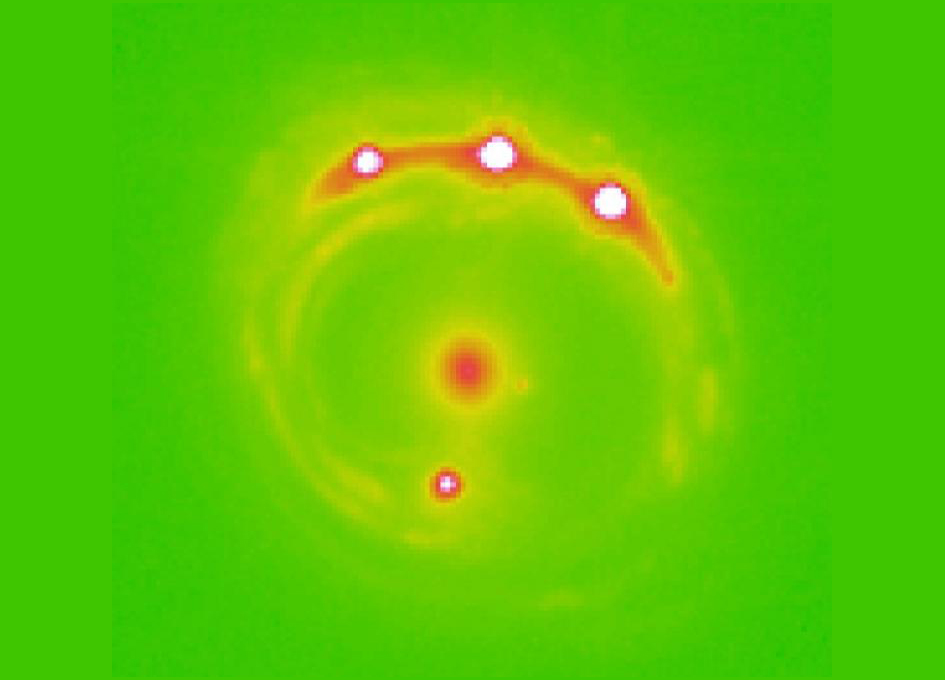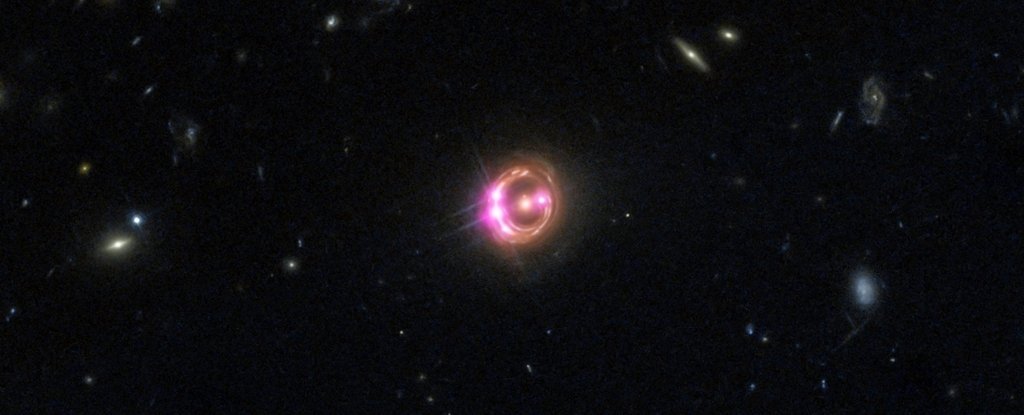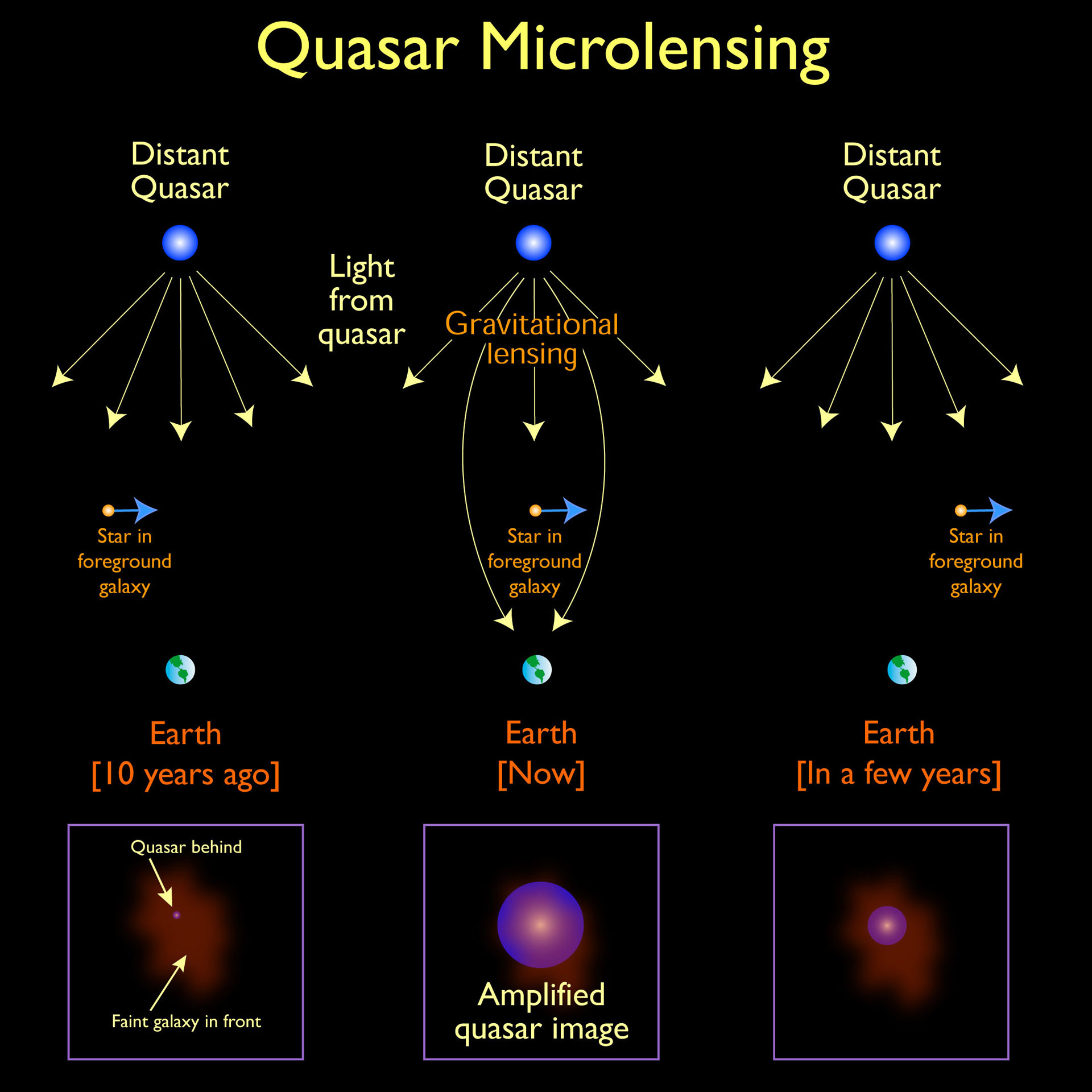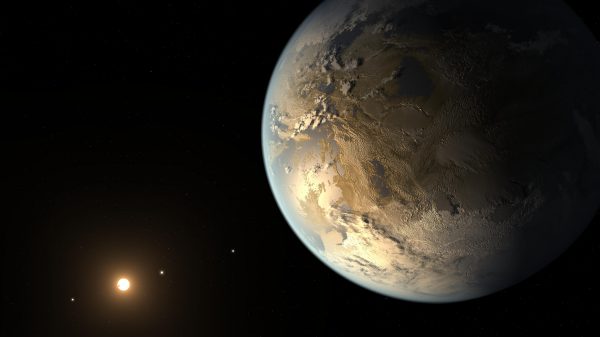
Thousands of exoplanets have been discovered so far, of many different types, but they all share one thing in common: they have all been found in our own galaxy. This is not surprising however, since of course they would be easier to detect than ones even farther away. But now, astronomers have reported the discovery of the first possible exoplanets in another galaxy, an incredible accomplishment, especially considering that the galaxy is 3.8 billion light-years away!
The planets were discovered by Xinyu Dai, professor in the Homer L. Dodge Department of Physics and Astronomy, OU College of Arts and Sciences, along with OU postdoctoral researcher Eduardo Guerras. The astronomers used the quasar microlensing technique to detect the planets, with data from NASA’s Chandra X-ray Observatory. The results, using microlensing models calculated at the OU Supercomputing Center for Education and Research, indicated that the objects, estimated to number about 2,000, ranged from the mass of the Moon to the mass of Jupiter. They are also unbound, meaning they are “rogue” planets not orbiting any stars. Similar rogue planets have also been found in our own galaxy.

From the abstract:
“Previously, planets have been detected only in the Milky Way galaxy. Here, we show that quasar microlensing provides a means to probe extragalactic planets in the lens galaxy, by studying the microlensing properties of emission close to the event horizon of the supermassive black hole of the background quasar, using the current generation telescopes. We show that a population of unbound planets between stars with masses ranging from Moon to Jupiter masses is needed to explain the frequent Fe Kα line energy shifts observed in the gravitationally lensed quasar RXJ 1131−1231 at a lens redshift of z = 0.295 or 3.8 billion light-years away. We constrain the planet mass fraction to be larger than 0.0001 of the halo mass, which is equivalent to 2,000 objects ranging from Moon to Jupiter mass per main sequence star.”
“We are very excited about this discovery. This is the first time anyone has discovered planets outside our galaxy,” said Dai. “These small planets are the best candidate for the signature we observed in this study using the microlensing technique. We analyzed the high frequency of the signature by modeling the data to determine the mass.”


Microlensing of quasars allows astronomers to determine the presence of such planets, even though no telescope yet built would be able to see them. The gravitational field of the galaxy 3.8 billion light-years away, between us and the quasar, bends light in such a way that it creates four images of the quasar. The researchers found that there were peculiar line energy shifts in the quasar’s light that could only be explained by planets in the galaxy lensing the quasar.
“This is an example of how powerful the techniques of analysis of extragalactic microlensing can be. This galaxy is located 3.8 billion light years away, and there is not the slightest chance of observing these planets directly, not even with the best telescope one can imagine in a science fiction scenario,” said Guerras. “However, we are able to study them, unveil their presence and even have an idea of their masses. This is very cool science.”
The new paper published in the Astrophysical Journal Letters, “Probing Planets in Extragalactic Galaxies Using Quasar Microlensing,” is available here.
FOLLOW AmericaSpace on Facebook!
SaveSave





